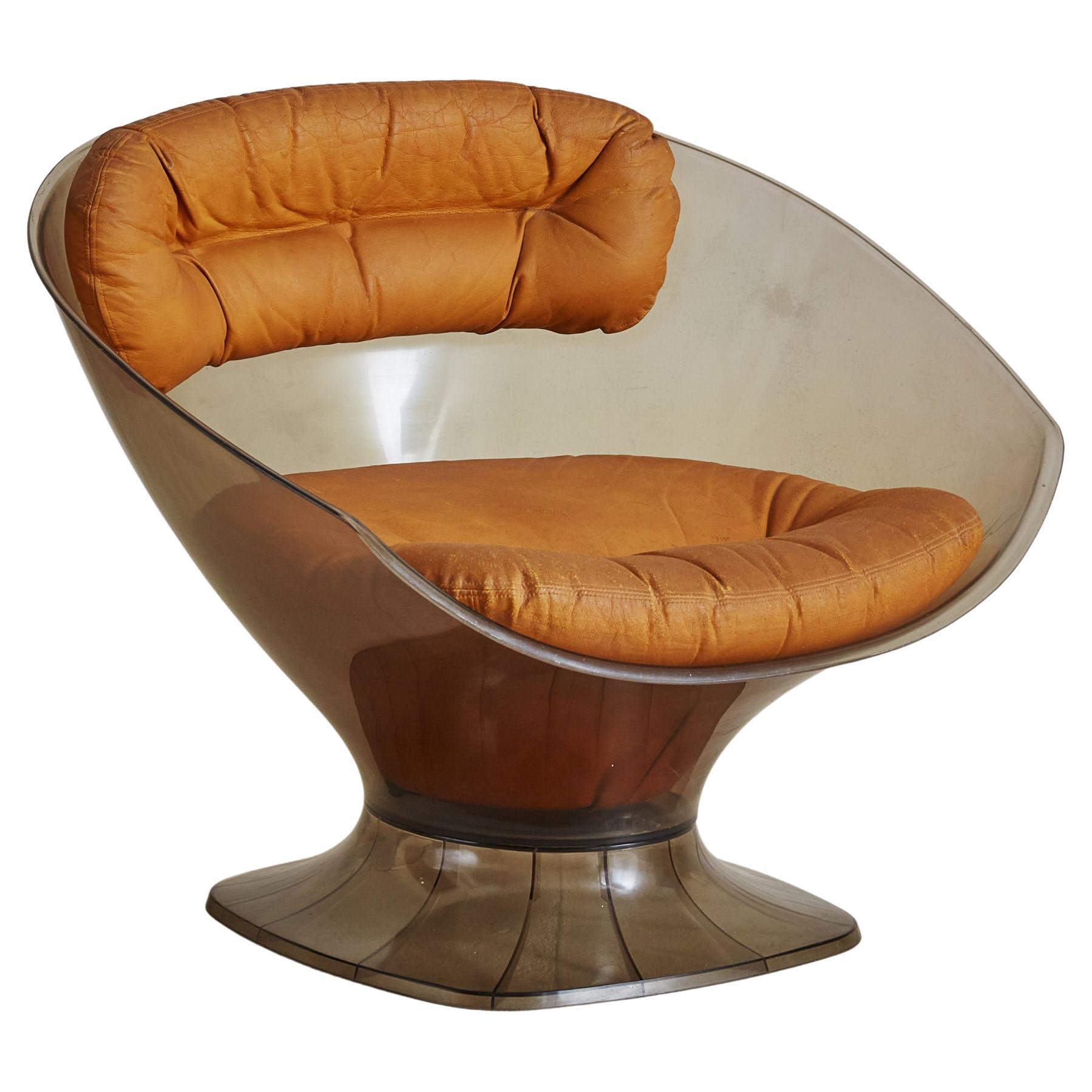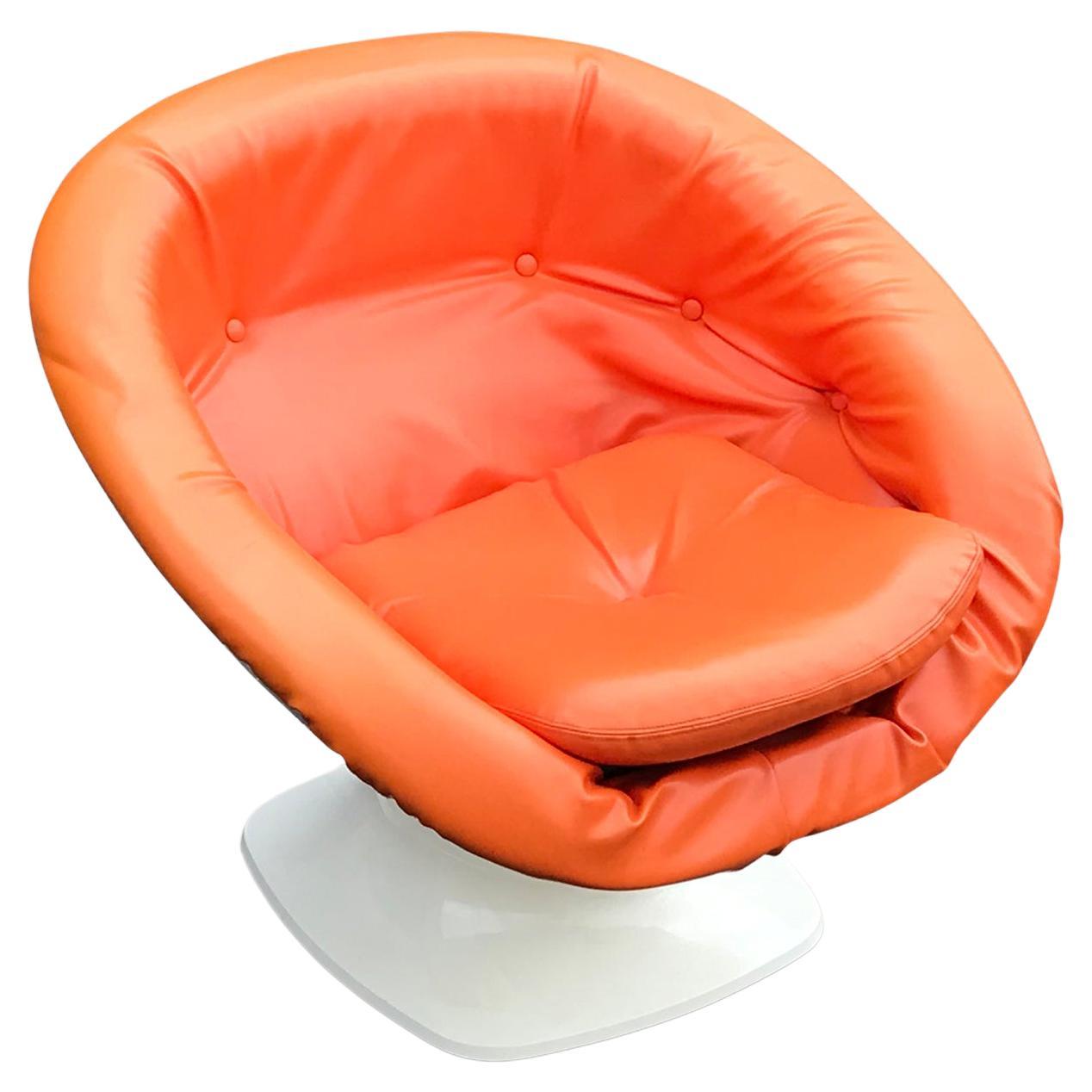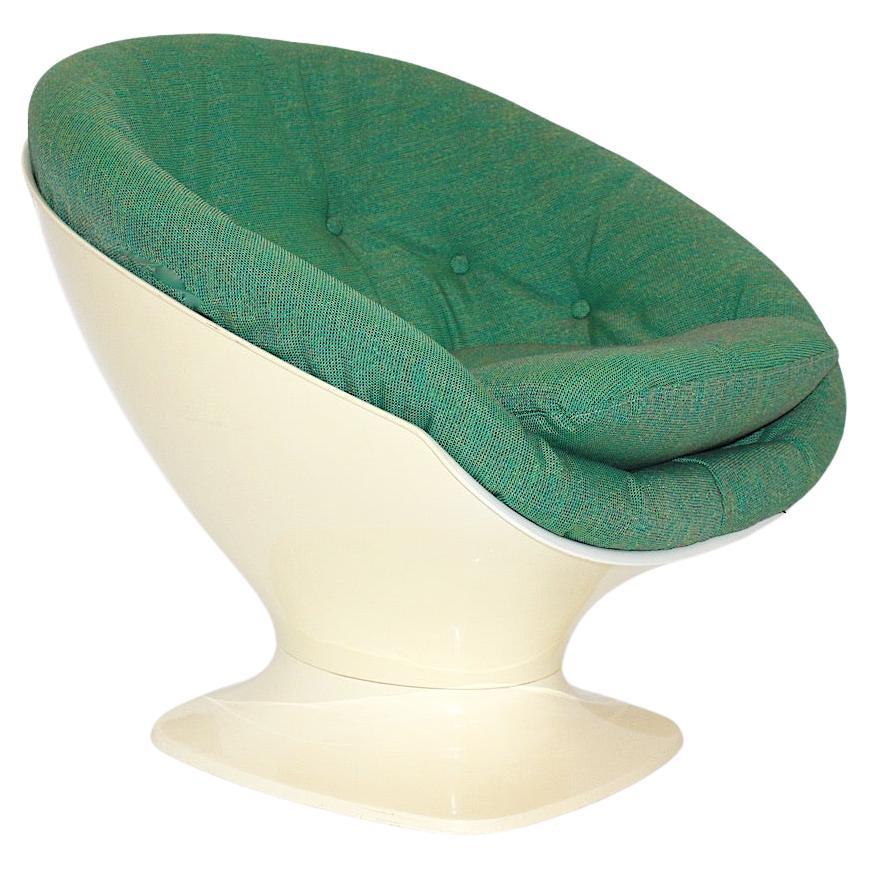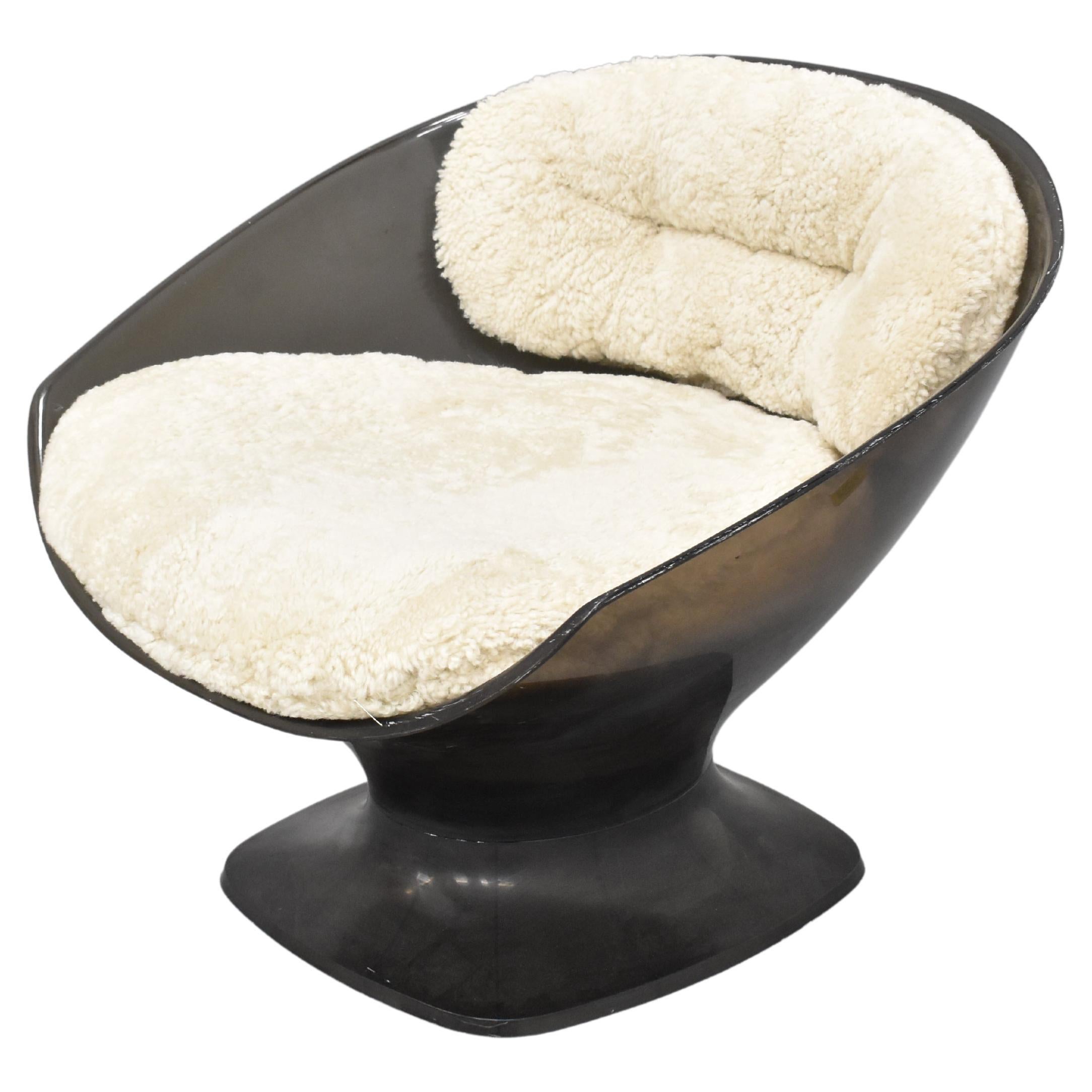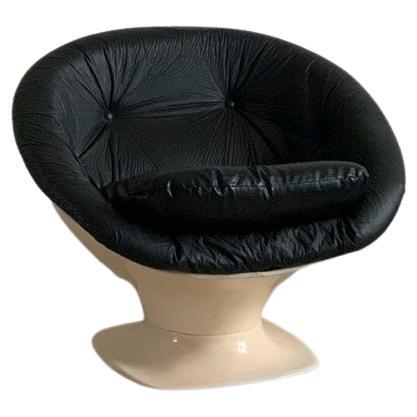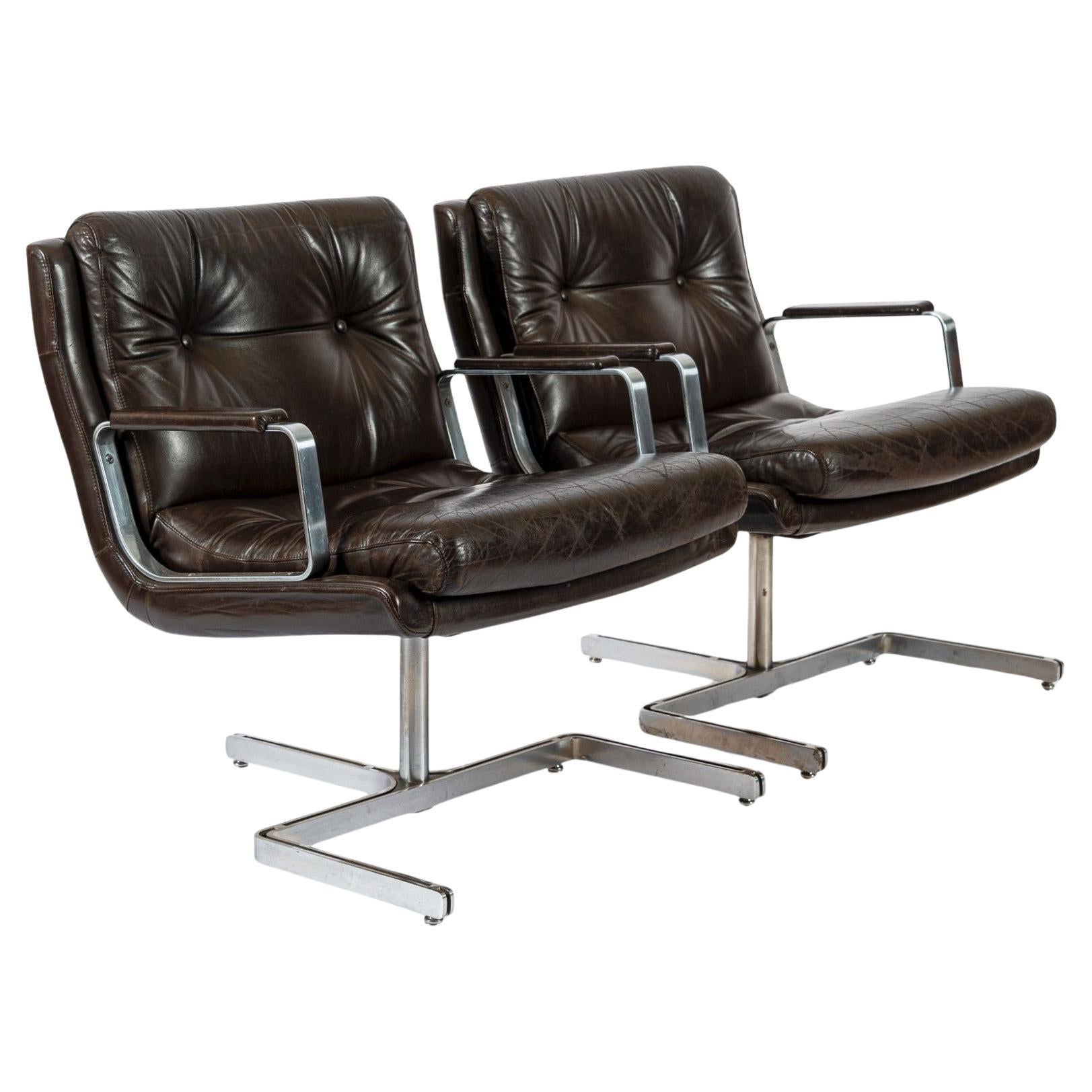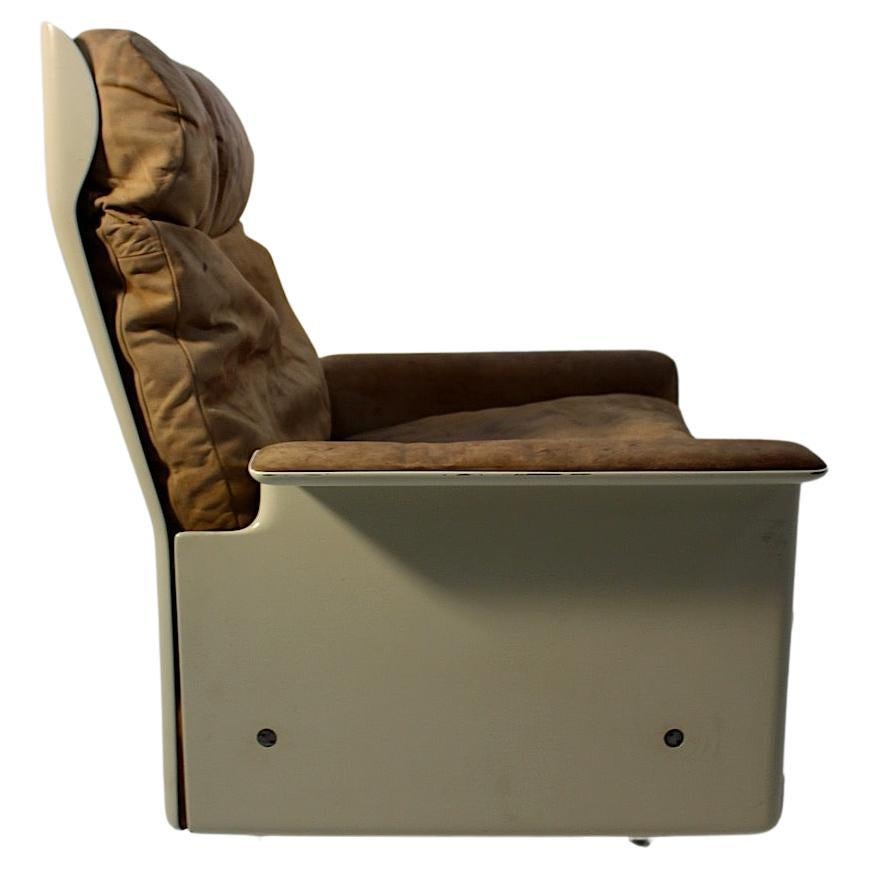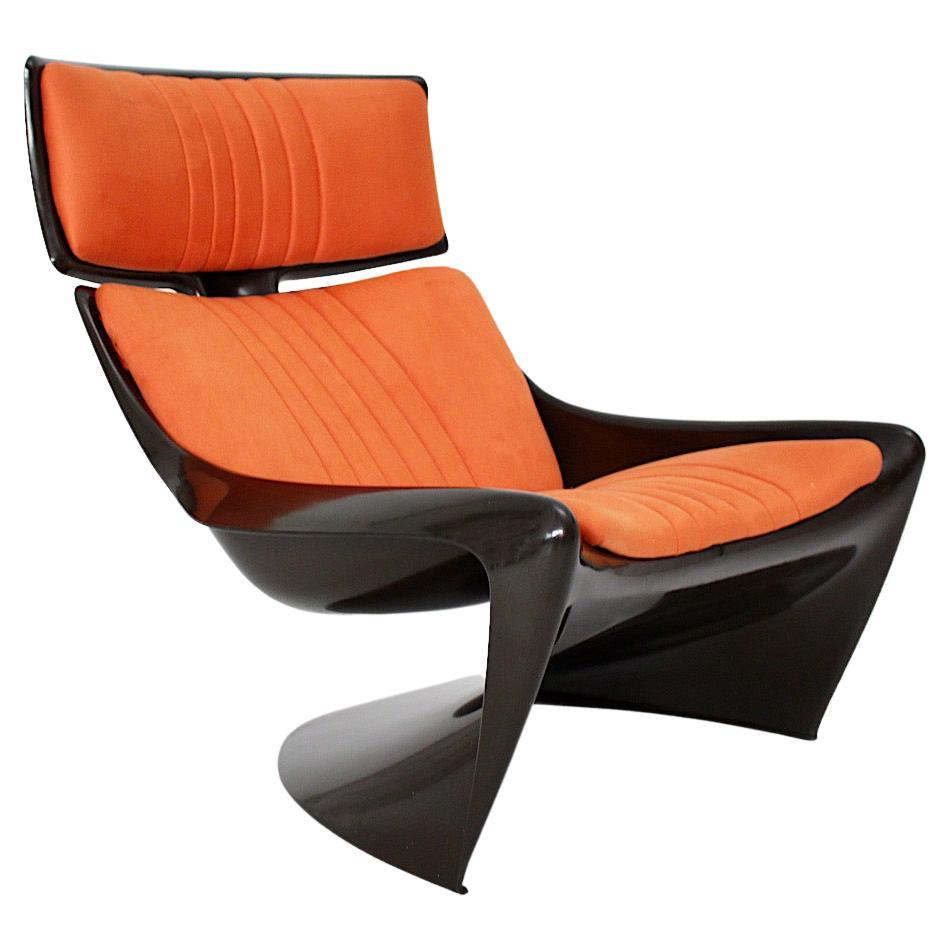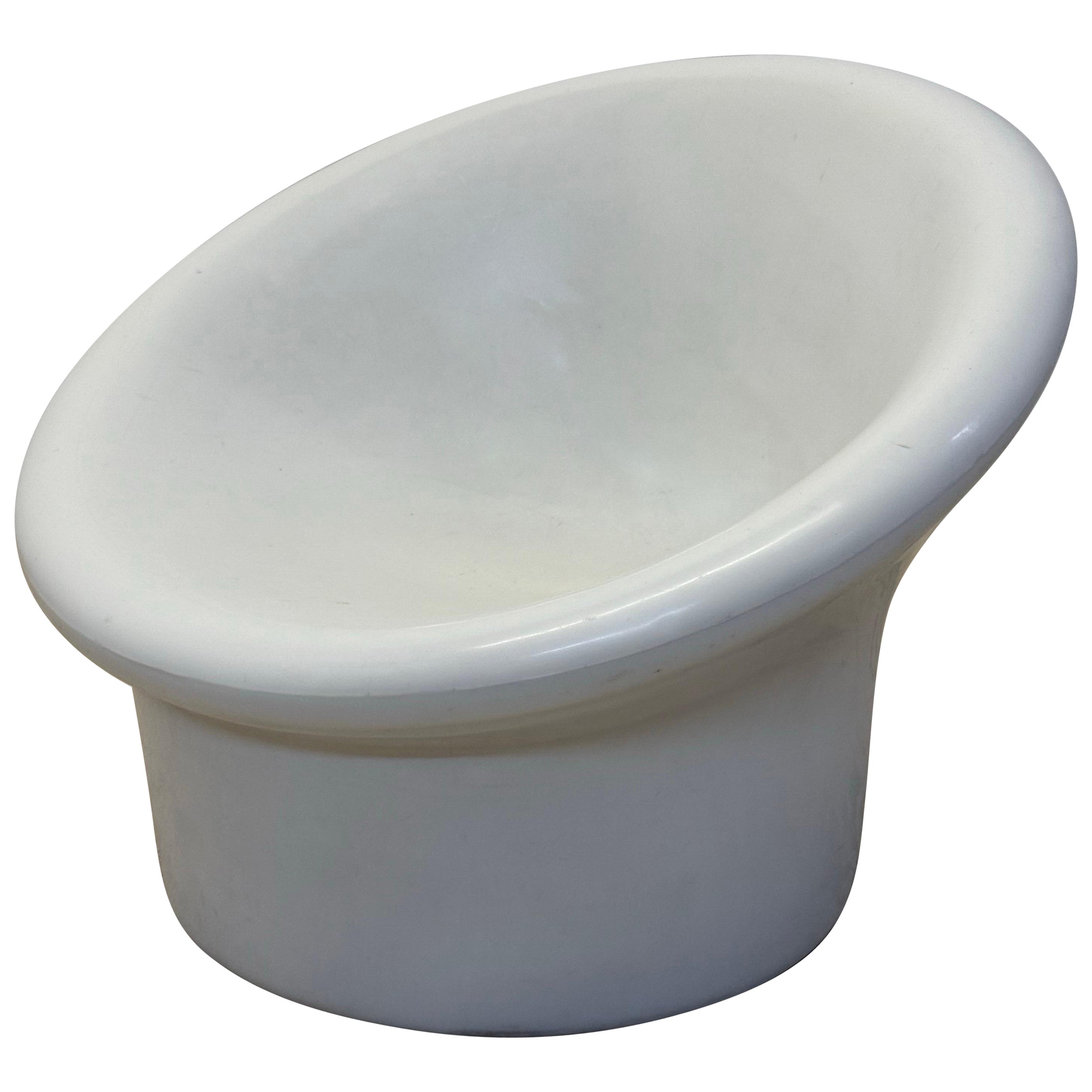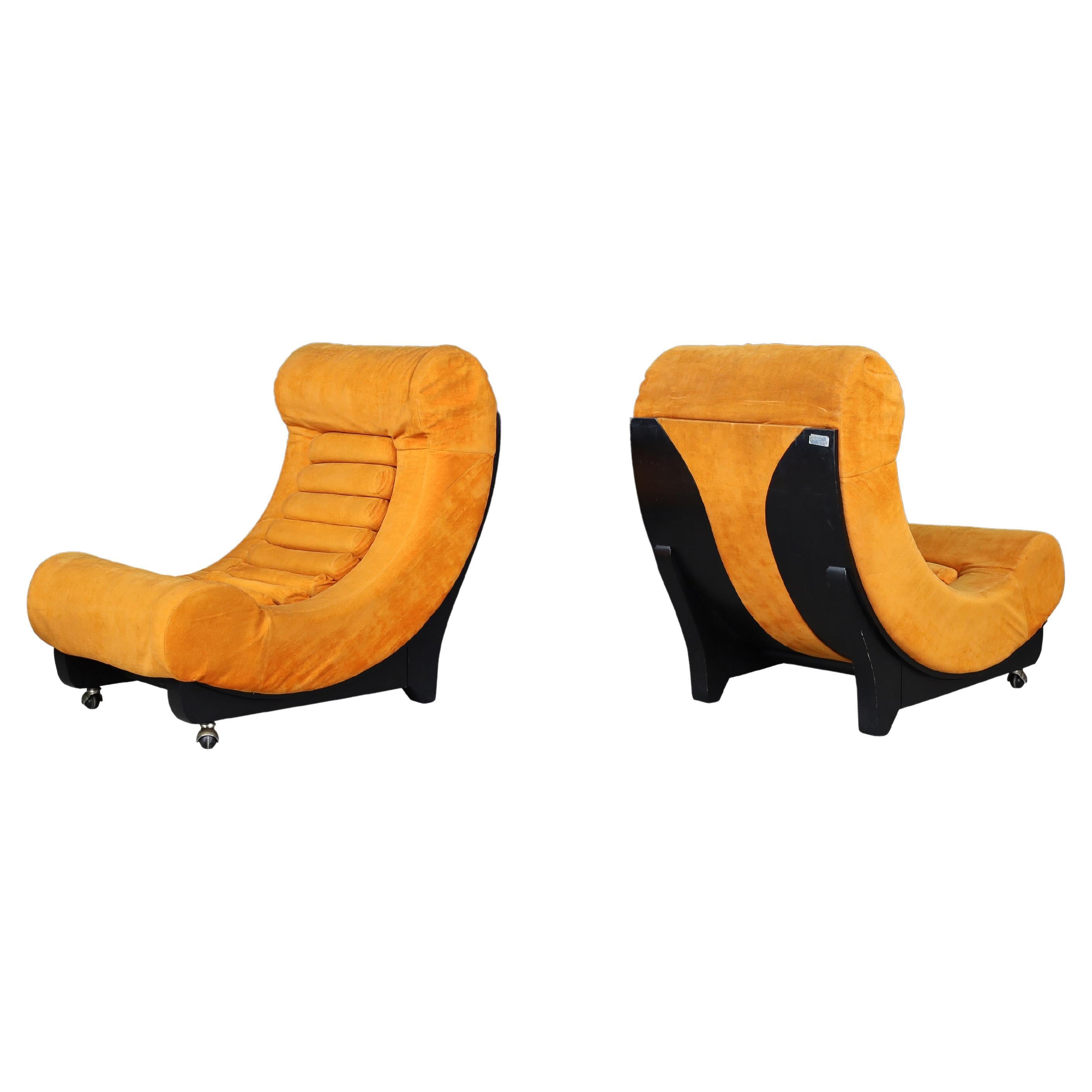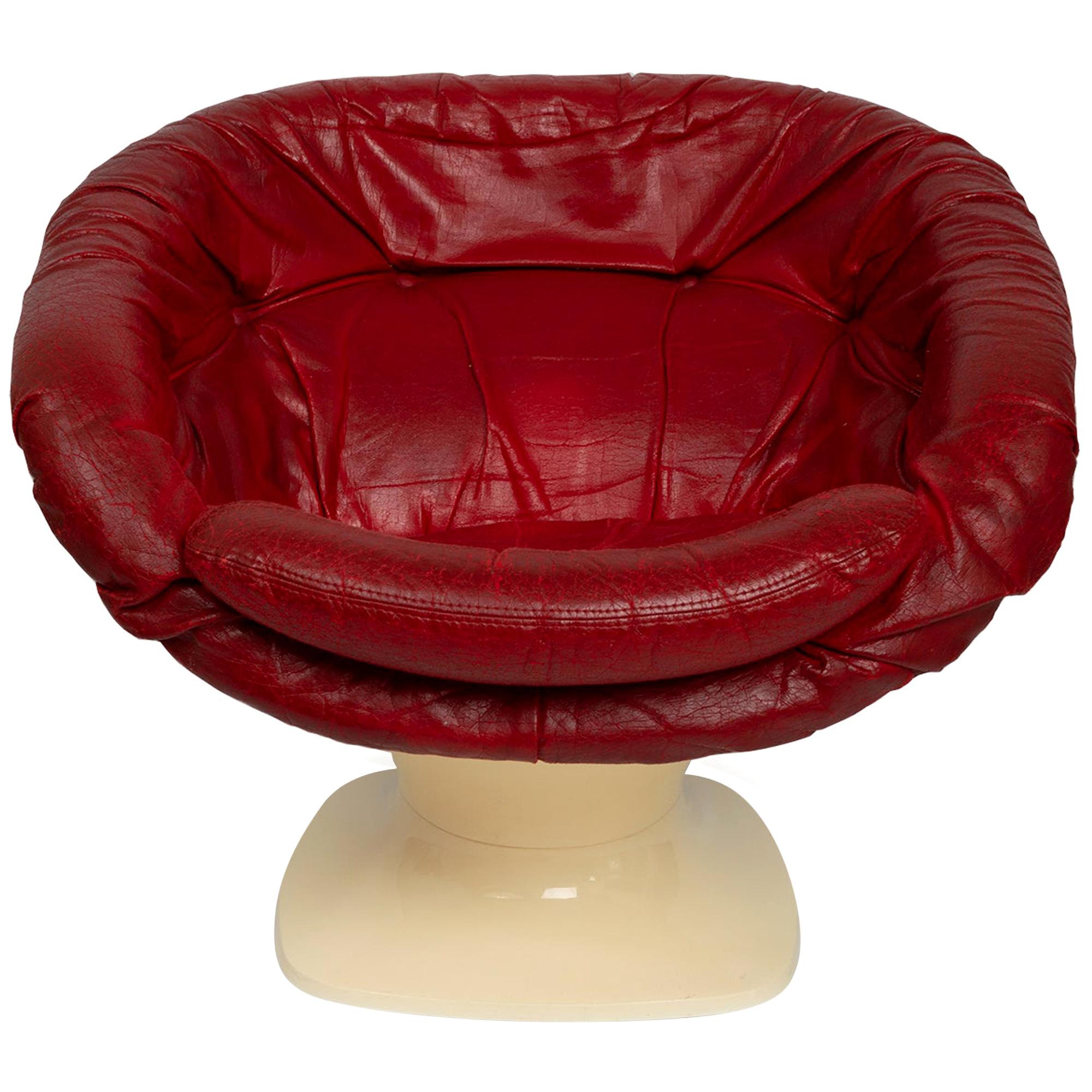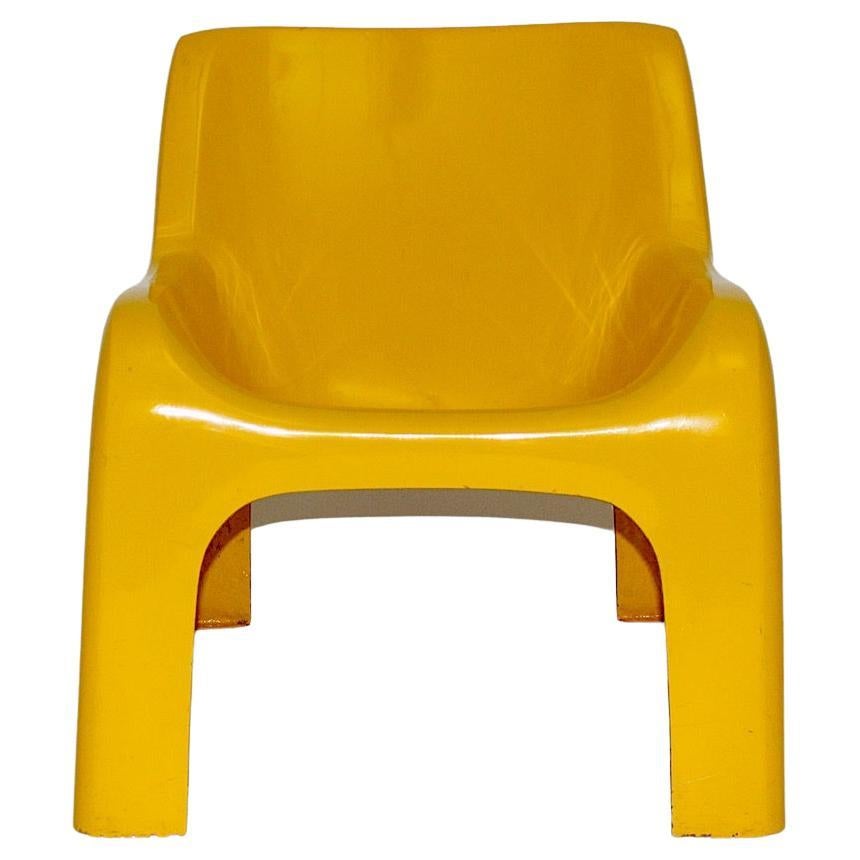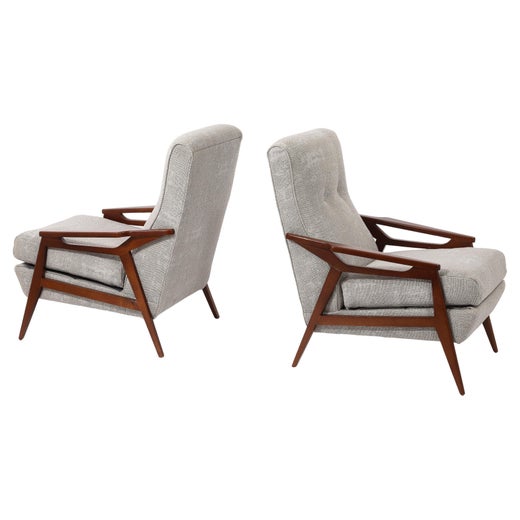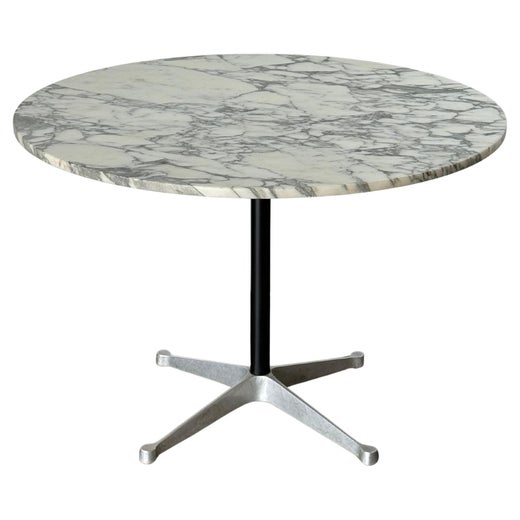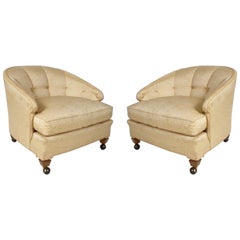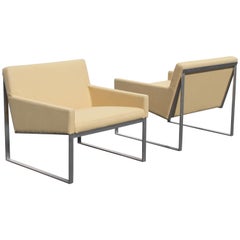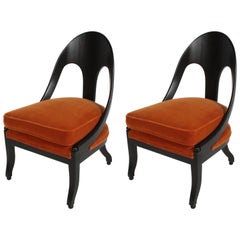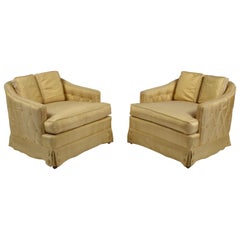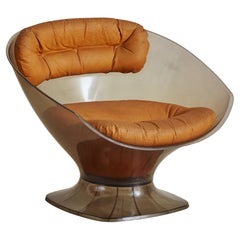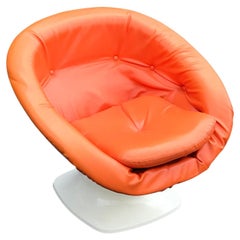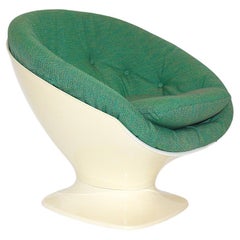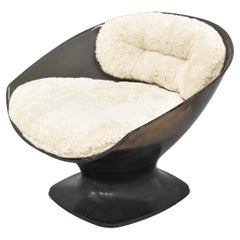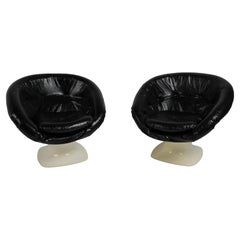
Pair of 1960s Space Age Modern Molded Plastic Lounge Chairs by Raphaël Raffel
View Similar Items
Pair of 1960s Space Age Modern Molded Plastic Lounge Chairs by Raphaël Raffel
About the Item
- Creator:Herman Miller (Manufacturer),Raphael Raffel (Designer)
- Similar to:Eero Aarnio (Designer)
- Dimensions:Height: 27 in (68.58 cm)Width: 31 in (78.74 cm)Depth: 28.5 in (72.39 cm)Seat Height: 16 in (40.64 cm)
- Sold As:Set of 2
- Style:Mid-Century Modern (Of the Period)
- Materials and Techniques:
- Place of Origin:
- Period:
- Date of Manufacture:1960s
- Condition:Wear consistent with age and use. Light yellowing of white plastic shells, some scuffs - scratches to shells. No tears noted in black vinyl seat covers.
- Seller Location:St. Louis, MO
- Reference Number:1stDibs: LU820238198462
Raphael Raffel
Best known in the world of design as simply Raphaël, Raphaël Raffel was one of the most influential French mid-century modern designers and decorators. His style inspirations ranged from 18th-century Parisian design to 1960s American and Italian Space Age chic.
Born in 1912 in Paris, Raffel studied design at the École des Beaux-Arts. In 1934, he began an interior decorating business, counting legendary French-American dancer Josephine Baker among his first clients.
During the 1930s and throughout the 1940s, Raffel was regarded as one of France’s illustrious “ensembliers-décorateurs,” designers who not only created furniture but focused on every element of interior space, from wall decorations to lighting.
By the 1950s, Raffel’s decorating and design talents had gained the attention of the French public service. Several commissions were awarded to Raffel to decorate embassies, university residences, post offices, the National Assembly and the ground floor and a wing of the Hôtel de Ville de Paris. Additionally, in 1952, Raffel worked with French designer, sculptor and architect André Arbus to decorate a section of the luxury ocean liner Bretagne. That same year, Raffel’s work was shown with designs by French ceramist Georges Jouve at the Salon des Arts Ménagers. In 1958, Raffel exhibited at the Brussels World’s Fair.
During the 1960s and 1970s, Raffel was inspired by the era’s popular Space Age style, evident in his plush, croissant-shaped sofas and pod-shaped lounge chairs, club chairs and armchairs, which he designed for furniture makers such as Maison Honoré and Herman Miller. Raffel also combined lacquer, glasswork, distinct colors and gilt bronze in his elegant, French neoclassical coffee and cocktail tables, side tables and desks.
Towards the end of the 1970s, Raffel’s business began to wane, finally closing in 1983. Raffel continued to work on design and decorating commissions until he died in 2000.
On 1stDibs, find a range of vintage Raphaël Raffel seating and tables.
Herman Miller
No other business of its kind did more than the Herman Miller Furniture Company to introduce modern design into American homes. Working with legendary designers such as Charles and Ray Eames, George Nelson and Alexander Girard, the Zeeland, Michigan-based firm fostered some of the boldest expressions of what we now call mid-century modern style. In doing so, Herman Miller produced some of the most beautiful, iconic and, one can even say, noblest chairs, sofas, tables and other furniture ever.
Founded in 1923, Herman Miller was originally known for grand historicist bedroom suites: heavily ornamented wood furniture that appealed to a high-minded, wealthier clientele. The company — named for its chief financial backer — began to suffer in the early 1930s as the Great Depression hit, and D.J. De Pree, the company’s CEO, feared bankruptcy. In 1932, aid came in the form of Gilbert Rohde, a self-taught furniture designer who had traveled widely in Europe, absorbing details of the Art Deco movement and other modernist influences. After persuading De Pree that the growing middle class required smaller, lighter household furnishings, Rohde set a new course for Herman Miller, creating sleek chairs, tables and cabinetry that were the essence of the Streamline Moderne style.
Rohde died suddenly in 1944. The following year, De Pree turned to George Nelson, an architect who had written widely about modern furniture design. Under Nelson’s leadership, Herman Miller would embrace new technologies and materials and audacious biomorphic forms.
Some of the pieces the company produced are now emblems of 20th century American design, including the Eames lounge chair and ottoman and Nelson’s Marshmallow sofa and Coconut chair. Such instantly recognizable furnishings have become timeless — staples of a modernist décor; striking, offbeat notes in traditional environments.
Find a range of vintage Herman Miller office chairs, desks, coffee tables and other furniture on 1stDibs.
More From This Seller
View AllVintage 1950s American Mid-Century Modern Lounge Chairs
Upholstery
2010s American Mid-Century Modern Lounge Chairs
Nickel
Vintage 1950s American Hollywood Regency Lounge Chairs
Vintage 1960s American Hollywood Regency Lounge Chairs
Upholstery
2010s American Mid-Century Modern Lounge Chairs
Chrome
Vintage 1950s Danish Scandinavian Modern Lounge Chairs
Upholstery, Oak, Teak
You May Also Like
Vintage 1960s French Modern Lounge Chairs
Leather, Acrylic
Vintage 1960s French Space Age Lounge Chairs
Faux Leather, Plastic
Vintage 1970s French Space Age Club Chairs
Fabric, Plastic
Vintage 1970s German Space Age Lounge Chairs
Acrylic
20th Century French Space Age Lounge Chairs
Leather, Fiberglass
Vintage 1970s French Mid-Century Modern Lounge Chairs
Metal, Stainless Steel
Recently Viewed
View AllRead More
The 21 Most Popular Mid-Century Modern Chairs
You know the designs, now get the stories about how they came to be.
A Guide to Herman Miller’s Most Iconic Furniture
The prolific manufacturer has partnered with many of the world’s top designers since opening its doors in 1923. Here are some of the company’s greatest hits, which helped transform the American home and office.
